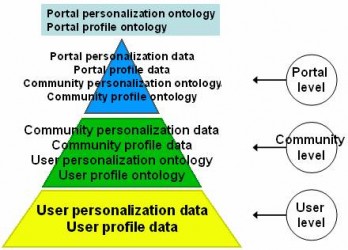A successful business needs maximum information. It is necessary to have information from maximum possible sources as the information also exists in multiple disparate systems. This also information needs to be accessed. The example to be quoted in this regard is of a customer calling a services representative for an order. Once the order is submitted the first step is the verification of the payment history of the customer to guarantee the account’s good standing. This requires switching of the system which makes the task difficult for the representative dealing with the services

Portal Integration is distinct type of integration. The system is easy to implement, which makes it an acclaimed one as compared to many recent systems of integration. One such recent one is Process integration.
The great advantage of portal integration lies in the fact that the need of representing the business process as the sequence of events is not required in the shape of precise process model.
This is something totally on the disposal of the user. This gives the ultimate user some compensation while mismatching the individual systems. This might not be as efficient as the Process Integration still it facilitates the user with greater flexibility and swift implementation. In most of the cases, Portal Integration is considered as the intermediate solution between understanding the process and incorporation of the same into the process model. Thus, this helps in leading to the transition to the Process Integration.
The portal engine can conveniently interact with different applications working individually. These applications include Data Integration, Functional Integration, or Presentation Integration. Primarily, the portal fulfills the function of exhibiting information. The portals are well suited with for various types of connectivity software, including data integration or presentation integration. Portal Integration has number of flavors ranging from the simple to the most complicated one. It is categorized into following variants:
- Display-only – The simplest form of the Portal Integration only functions as the display screen. The screen displays the information of each application in the rectangular area called pane. The multiple applications are retrieved to be presented on the screen. No other functionality.
- Simple post – Processing, Instead of using the coming from individual systems, many portals are used to help in the decision making process by adding simple rules. This helps in transforming raw data into user friendly information.
- Single application interaction – It is the variant that presents the data in various parts of screen. It gives permission to the user to access by switching from one system to another. Hence, the user becomes able to get information from multiple systems and hence uses the data to perform a single system business function.
- Cross-pane interactivity – The information to be displayed in one pane depends on how it is presented in the other panel. Such portal facilitates the task without fully integrating the systems.
Why portal integration system
The quality integration helps the user in several ways.
1. Non-intrusive
As the primary function of the portal is retrieval and display, therefore it can be added to any existing systems without disturbing the original working. This case is special in case of using data integration for the retrieving the system.
2. Implementing Speed
Putting a portal to work by adding it to the obr which already exists is a matter of days and sometimes weeks. The fully integrated system requires a period of a month. Most of the software and portal sellers provide great combos of portal integration platforms and enterprise applications and sources of data.
3. Flexibility
Keeping in view the job description of the user, who works like a decision maker. The portal integration can be utilized in circumstances where the rules governing the business administration are neither clear or not agreed upon.
4. Automation
Quality portal supports the automation of simplified tasks. The portal needs the manual interaction between the user and portal.
5. Decision making
The portal integration helps the user in decision making. The user is helped to sequence the tasks to be performed. In this case the flexibility is offered.
The best time to opt for the qualified portal is at the start of any business. The portal integration makes it possible to access the information stored either internally or externally. Thus, it the personalized information is received through a single gateway. The support is provided through Portal integration by consolidation, management, analysis, and distribution of all sorts of information within and outside the enterprise.
